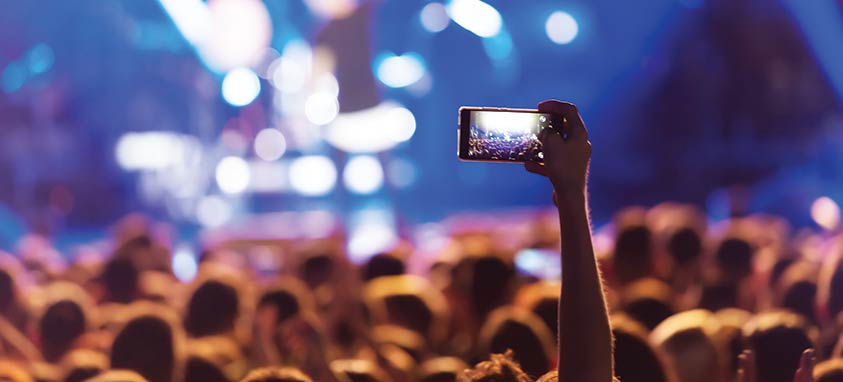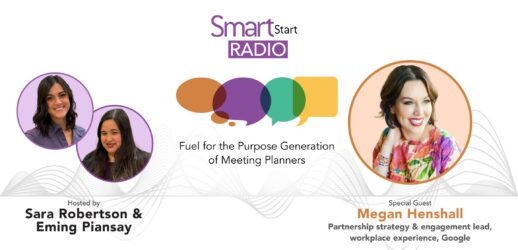How brands can take advantage of live-stream platforms
The explosive popularity of live streaming can be attributed to several of its appeals—spontaneity, authenticity, instantaneity and exclusivity. With a huge amount of content floating around the Web, the world wants to be there as events transpire, seeing every bit of behind-the-scenes action.
Social media relies heavily on being temporary and present, as evidenced by the daily-feed feature on each of its platforms. Watching a video in real time is highly attractive to a modern audience because it’s innately temporary. Also, instead of pushing an agenda, videos offer entertainment without imposition, a rarity in a world of banner ads.
Livestream, a video platform service, found that brand visuals are much preferred, with 80 percent favoring live video to reading a blog post. Brands can use several live-stream tactics, including Q&A sessions, conversations, behind-the-scenes peeks, announcements, launches and influencers.
“We’re consumers more than anything else,” says Dahlia El Gazzar, tech evangelist and igniter for Dahlia+. “We need to be better about interacting with the audience and analyzing their feedback. We should be capitalizing on user-generated contact. This is gold for event planning.”
Brands must examine what their audience wants and strategize accordingly. After all, the analytics are available and the technology exists: They just need to be applied properly.
Snapchat: Catch Everyone’s Attention
Snapchat’s daily videos grew 400 percent, from 2 billion to 10 billion, from May 2015 to May 2016, according to Bloomberg. At a projected monthly growth of 33 percent, Snapchat will reach more than 18 billion daily video views by May 2017, Bloomberg predicts.
As the pioneer of instant video coverage, Snapchat is tremendously successful because it understands the modern audience. Clips are limited to 10 seconds, available within a 24-hour window. Such restrictions are huge advantages, ensuring that a video is carefully crafted and brief enough for wide viewership. The event staple allows videos to highlight location while inducing a sense of urgency and exclusivity. Behind-the-scenes coverage from multiple perspectives is a great opportunity for brands because this creates the most excitement.
Facebook Live: Communicate With Your People
In April 2016, Facebook Live was launched. Facebook adds a little more creative freedom to videos than its competitors by offering filters, drawing options and live reactions. Analytics are provided after a live stream to accurately depict success at any given moment, along with an overall stream report. Unlike other platforms, Facebook offers privacy filters that allow the audience to be a carefully selected group. Therefore, conversations and reactions to a stream are more personalized, focused and relevant. This extra feature supports Facebook’s aim to offer a tight-knit audience within a huge platform.
YouTube Live: Inform Virtually
YouTube automatically archives video streams, adding them to a channel and making live videos valuable additions to a specific playlist. The live stream can also be added to any Web page without a premium plan, directing traffic to a home page rather than to YouTube. Since YouTube Live is free of advertisements at a low-cost, informative materials are well-suited for it. Interviews, presentations and instructional demonstrations can also be optimized on this platform.
Periscope: Build Your Brand’s Character
Periscope provides a variety of beneficial features. For instance, users can sketch directly onto presentations and incorporate GoPro coverage. Global-availability and easily navigable functions contribute to the charm, as well.
Twitter recently acquired Periscope, which has increased Periscope’s professional use for a variety of internal and external purposes. Periscope videos can be saved, but only for a 24 hours.
Power of an Influencer
Influencers may simply make an appearance or conduct an “influencer takeover,” where the lead generation manages the platform for a certain time. For instance, influencer Pharrell Williams hosted an Adidas launch event through the brand’s account. He posted his own coverage throughout the event, and within 24 hours, Adidas had 3.4 million views of its story. Ultimately, there is one major tactic for attracting influencers—incentives.
“People want to be part of the circle. Being able to get first access will always attract influencers,” says El Gazzar, adding that special offers, celebrity meetings, VIP entrances and personalized perks are also very effective.
The Wall Street Journal reports that Facebook invested $50 million to feature renowned publishers and celebrities to produce live content. Such investments suggest that major social media brands see the trend in live video becoming increasingly important.
The Bigger Picture
Technologies will continue to develop. Still, with so much already established, it’s time to evaluate strategy and tool selection. The potential of available technology has yet to be realized.
“Often, companies need a soundboard to self-evaluate on,” El Gazzar says. “Companies will now begin to look inward at their level of tech-savviness and work that needs to be done. In the year 2017, people have to consider how media is intertwined. When evaluating tech, consider how the data interacts. Ask, ‘What are the missing pieces?’”
Brands have been gifted with live steaming, a tool with countless uses and proven success. All industries should take note.




